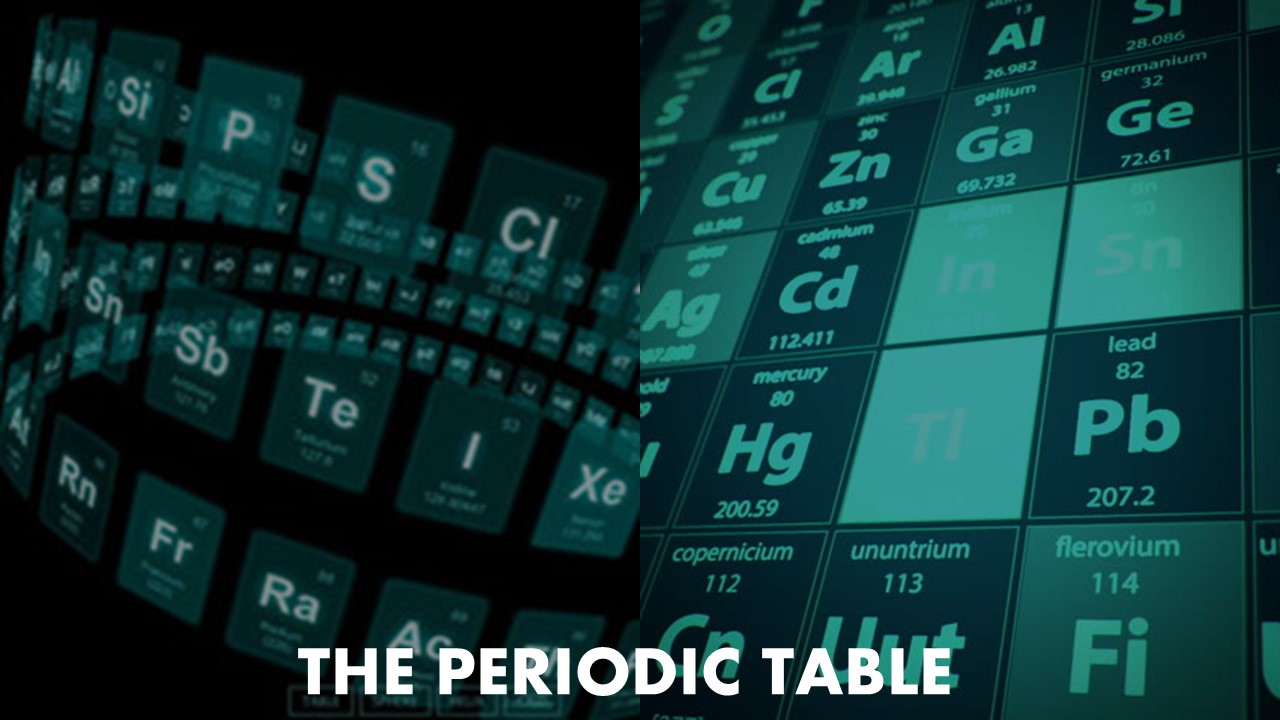STD IX – THE PERIODIC TABLE – (Online)
About Course
In this section will learn following chapters:
1.General idea of Dobereiner’s triads
2.Discovery of Atomic Number
3.Modern Periodic Table
4.Alkali Earth metals
Last Updated:April 1, 2022
0 (0 Ratings)
Share Course
Page Link
Share on social media

Description
General idea of Dobereiner’s triads
Doberneir’s triads
Certain elements could be grouped in groups of three elements each such that the atomic mass of the middle element was approximately equal to the average of the atomic masses of the other two elements in the triad.
E.g. Strontium (atomic mass-88) has an atomic mass equal to the average of the atomic masses of barium and calcium (137 + 40/2 = 88.5).
E.g. bromine (atomic mass 80) has an atomic mass equal to the average of the atomic masses of chlorine and iodine (35.5 + 127/2 = 81.25).
Drawbacks:
All elements could not be grouped into triads; the rule did not hold good for any other combination even within the same family.
Law of Octaves
Every eighth element (starting from any given element) has properties similar to the first element, in the same pattern as seen in musical notes. The first note ‘sa’ repeats itself after every 7 notes thus showing the similarity between periodicity and musical note pattern.
This law gave the first idea about periodicity present in elements.
Once the rare gases were discovered, it could not explain the similarity between the first and eighth elements.
Discovery of Atomic Number
Henry Mosley is credited with the modern periodic table (published in 1913). The modern periodic table that we use, is an arrangement of chemical elements with a configuration of their chemical properties based on the atomic number.
In this lesson, you will learn about the periodic table, how chemical elements are arranged and the concept of trends.
Periodic Table
The periodic table is an arrangement of chemical elements in the order of their atomic number, electron configurations and recurring chemical properties in a tabular form.
The modern periodic table has eighteen vertical columns called groups and seven horizontal rows called periods.
Elements are arranged in the order of increasing atomic numbers and show the trends in their properties.
The periodic table
Can be used to derive relationships between the properties of the elements.
Can be used to predict properties of new elements yet to be discovered or synthesized.
Provides a useful framework for analysing chemical behaviour.
Periodic Trends
The elements in the periodic table are arranged in such a way that elements with similar behaviour are found in the same column.
The table also contains four rectangular blocks with similar chemical properties.
In general, within one row (period), the elements on the left are metals and the elements on the right are non-metals.
This arrangement displays ‘periodic trends’, which is elements with similar properties are placed together in the same column or row.
Free
Free
Free access this course
-
LevelIntermediate
-
Last UpdatedApril 1, 2022
-
CertificateYes
Hi, Welcome back!
Material Includes
-
Live Interactive classes with in-class doubt solving
-
Weekly Test and Quiz with instant tracking for progress
-
Revision of the course after testing
-
Fortnightly Parents and Tutor interactions
-
Expert monitoring of student's learning progress
-
Daily communication over call, whatsapp and mail
-
3 hours on-demand video
-
4 downloadable resources
-
Access for entire Academic Year
-
Access on mobile and Desktop
-
Assignments and review of the same
-
Tests and Correction by Board paper checkers
-
Certificate of completion and Live tracking with Grade book
Course Duration:
0
Course level:Intermediate
Enrolled:0
About Course
In this section will learn following chapters:
1.General idea of Dobereiner’s triads
2.Discovery of Atomic Number
3.Modern Periodic Table
4.Alkali Earth metals
Course Curriculum
General idea of Dobereiner’s triads
-
08:09
-
04:03
-
01:11
-
05:00
Newland’s Law of Octaves
MODERN PERIODIC TABLE
-
05:00
-
00:47
-
QUIZ – PERIODIC TABLE > MENDELEEV’S PERIODIC LAW
-
04:00
-
QUIZ – PERIODIC TABLE > MODERN PERIODIC TABLE : LONG FORM OF PERIODIC TABLE
Discovery of Atomic Number
-
08:06
-
06:00
-
QUIZ – PERIODIC CLASSIFICATION OF ELEMENTS LET’S RECALL
Student Ratings & Reviews

No Review Yet

